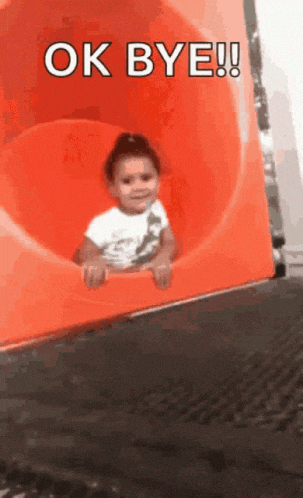Basic Linux Commands Every Beginner Should Know
If you're new to Linux this will prolly help you out ;)
OVERVIEW
While using Twitter I was going through one of my friend's tech blogs which was published on this platform. So I thought why not try this? Also, it would be pretty amazing if I were to publish what I learn publically and help others learn through my experiences and vice-versa. And at the end, it would help me to revise the stuff I learn. So, if you're a beginner then it is very important for you and this will surely help you out. Hope that you learn something from it.
Why is it important?
If you're interested in computer science then you don't even need to read this out, you would be passionate to learn about new things but still, it's another way of performing operations directly by giving commands rather than performing actions manually. Also in terms of speed, using the command line is faster than using your output devices. So here goes -
Current Location of directory
pwd - Gives us the exact location in which we are right now i.e. Desktop (given that you are opening your terminal on a Desktop).
PS C:\Users\lenovo\Desktop> pwd
Path
----
C:\Users\lenovo\Desktop
Access directory items
ls - Shows all the items present in the current directory(folder/location).
Note: Assuming you are opening GitBash on your Desktop, an additional file desktop.ini will be created, but you don't have to worry because it's a hidden file used to store information about the arrangement of a Windows folder. Essentially, if the layout or settings for a folder are changed, a desktop.ini file is automatically generated to save those changes.
PS C:\Users\lenovo\Desktop> ls
Directory: C:\Users\lenovo\Desktop
Mode LastWriteTime Length Name
---- ------------- ------ ----
d----- 28-01-2023 08:57 Dimen
d----- 12-01-2023 14:03 dump
-a---- 10-08-2015 13:46 6977272 KMSAuto Net.exe
-a---- 19-11-2022 12:20 2392 Mridul - Chrome.lnk
-a---- 14-11-2022 03:22 39936 Mridul's Resume (AutoRecovered).doc
-a---- 18-11-2022 04:35 34816 Mridul's Resume 123.doc
-a---- 18-11-2022 04:50 382186 Mridul_Resume - Copy.pdf
-a---- 18-11-2022 04:38 21376 Mridul_Resume.docx
-a---- 18-11-2022 04:50 382186 Mridul_Resume.pdf
-a---- 26-01-2023 14:25 2208 Slack.lnk
-a---- 14-11-2022 04:21 39936 Updated Resume.doc
-a---- 19-11-2022 12:23 94786 Vallary_Resume.pdf
-a---- 19-11-2022 13:26 318586 Vallary_Resume_2022.rtf
-a---- 14-11-2022 03:07 2202 WhatsApp.lnk
Print Text
echo -- Prints whatever you write after it.
PS C:\Users\lenovo\Desktop\Test> echo hi
hi
Information about commands
man -- Tells us what a particular command does and how it works(basically it's documentation).
PS C:\Users\lenovo> man pwd
NAME
Get-Location
SYNTAX
Get-Location [-PSProvider <string[]>] [-PSDrive <string[]>] [-UseTransaction] [<CommonParameters>]
Get-Location [-Stack] [-StackName <string[]>] [-UseTransaction] [<CommonParameters>]
ALIASES
gl
pwd
REMARKS
Get-Help cannot find the Help files for this cmdlet on this computer. It is displaying only partial help.
-- To download and install Help files for the module that includes this cmdlet, use Update-Help.
-- To view the Help topic for this cmdlet online, type: "Get-Help Get-Location -Online" or
go to https://go.microsoft.com/fwlink/?LinkID=113321.
Create a new directory
mkdir Test -- Creates a new folder Test in the current directory i.e. Desktop.
PS C:\Users\lenovo\Desktop> mkdir Test
Directory: C:\Users\lenovo\Desktop
Mode LastWriteTime Length Name
---- ------------- ------ ----
d----- 28-01-2023 10:04 Test
Go inside the directory
cd Test/ -- Go inside the Test directory.
Note: Now our current directory is changed to Desktop/Test so whatever action we perform will be done on the Test directory.
PS C:\Users\lenovo\Desktop> cd Test/
PS C:\Users\lenovo\Desktop\Test>
Go back
cd .. -- Go back to the previous directory.
PS C:\Users\lenovo\Desktop\Test> cd..
PS C:\Users\lenovo\Desktop>
Remove directory
rmdir Test/ -- Remove the Test folder from the current directory.
Note: This command only works if the Test folder is empty, if there are additional folders inside the Test folder then we cannot use the above command.
So, for removing a non-empty directory use the below command to remove the Test folder.
rm -r Test/ -- Removes the Test folder even if have additional files in it.
PS C:\Users\lenovo\Desktop> mkdir Test
Directory: C:\Users\lenovo\Desktop
Mode LastWriteTime Length Name
---- ------------- ------ ----
d----- 28-01-2023 10:18 Test
PS C:\Users\lenovo\Desktop> rmdir Test
Copy
cp -r x/ y/ -- Copy x folder into y folder.
Note: We created 2 folders x and y using mkdir inside our current directory i.e. Test. To copy one folder to the other folder write the name of the folder you wanna copy first and then the folder in which you wanna copy as mentioned above.
cp name.txt y/ -- We don't need -r to copy files.
Move
mv -r x/ y/ -- Move x folder into y folder.
Note: We created 2 folders x and y using mkdir inside our current directory i.e. Test. To move one folder to the other folder write the name of the folder you wanna move first and then the folder in which you wanna copy as mentioned above.
mv name.txt y/ -- We don't need -r to move files.
Rename a file
mv Test Test1 -- Test will be renamed to Test1.
Create a new file
touch name.txt -- Creates a file in the current directory.
Download files from internet
wget -- can help you download files from the internet.
wget "download link"
Display previous commands
history -- display the commands that you’ve typed before.
Clear
clear -- This command is used to clear the terminal and make a new start.
Tip: Try implementing the rest of the commands by yourself, it's fun. And in case you get stuck then of course you have google for that. XD
Thank you so much :)

